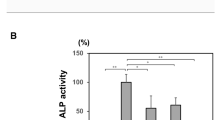Abstract
Objective
To report on the biochemistry and clinical and genetic findings of two siblings, the younger sister presenting with recurrent bone pain of the radius and ulna, and medullary sclerosis, and the older brother with soft tissue calcific deposits (tumoral calcinosis) but who later developed bone pain. Both were found to be hyperphosphaturic.
Materials and methods
The index family comprised four individuals (father, mother, brother, sister). The affected siblings were the offspring of a non-consanguineous Indian family of Tamil origin. Bidirectional sequencing was performed on the DNA from the index family and on 160 alleles from a population of 80 unrelated unaffected control individuals of Tamil extraction and 72 alleles from individuals of non-Tamil origin.
Results
Two symptomatic siblings were found to harbour previously unreported compound heterozygous missense UDP-N-acetyl-D-galactosamine: polypeptide N-acetylgalactosaminyltransferase 3 (GalNAc-transferase; GALNT3) mutations in exon 4 c.842A>G and exon 5 c.1097T>G. This sequence variation was not detected in the control DNA. This is the first report of siblings exhibiting stigmata of familial tumoral calcinosis and hyperostosis–hyperphosphataemia syndrome with documented evidence of autosomal recessive missense GALNT3 mutations.
Conclusion
The findings from this family add further evidence to the literature that familial tumoral calcinosis and hyperostosis–hyperphosphataemia syndrome are manifestations of the same disease and highlight the importance of appropriate metabolic and genetic investigations.



Similar content being viewed by others
References
Palmer PE. Tumoural calcinosis. Br J Radiol. 1966;39:518–25.
Prince MJ, Schaeffer PC, Goldsmith RS, Chausmer AB. Hyperphosphatemic tumoral calcinosis: association with elevation of serum 1, 25-dihydroxycholecalciferol concentrations. Ann Intern Med. 1982;96:586–91.
Mikati MA, Melhem RE, Najjar SS. The syndrome of hyperostosis and hyperphosphatemia. J Pediatr. 1981;99:900–4.
Ichikawa S, Imel EA, Kreiter ML, Yu X, Mackenzie DS, Sorenson AH, et al. A homozygous missense mutation in human KLOTHO causes severe tumoral calcinosis. J Clin Invest. 2007;117:2684–91.
Vigorita VJ. Orthopaedic pathology. 2nd ed. Philadelphia: Lippincott, Williams, Wilkins; 2008. pp. 73–90.
Frishberg Y, Topaz O, Bergman R, Behar D, Fisher D, Gordon D, et al. Identification of a recurrent mutation in GALNT3 demonstrates that hyperostosis-hyperphosphatemia syndrome and familial tumoral calcinosis are allelic disorders. J Mol Med. 2005;83:33–8.
Benet-Pages A, Orlik P, Strom TM, Lorenz-Depiereux B. An FGF23 missense mutation causes familial tumoral calcinosis with hyperphosphatemia. Hum Mol Genet. 2005;14:385–90.
Garringer HJ, Malekpour M, Esteghamat F, Mortazavi SM, Davis SI, Farrow EG, et al. Molecular genetic and biochemical analyses of FGF23 mutations in familial tumoral calcinosis. Am J Physiol Endocrinol Metab. 2008;295:E929–37.
Masi L, Gozzini A, Franchi A, Campanacci D, Amedei A, Falchetti A, et al. A novel recessive mutation of fibroblast growth factor-23 in tumoral calcinosis. J Bone Joint Surg Am. 2009;91:1190–8.
Narchi H. Hyperostosis with hyperphosphatemia: evidence of familial occurrence and association with tumoral calcinosis. Pediatrics. 1997;99:745–8.
Ichikawa S, Imel EA, Econs MJ. Genetics of familial tumoral calcinosis. Am J Kidney Dis. 2009;53:563–4.
ADHR Consortium. Autosomal dominant hypophosphataemic rickets is associated with mutations in FGF23. Nat Genet. 2000;26:345–8.
Shimada T, Mizutani S, Muto T, Yoneya T, Hino R, Takeda S, et al. Cloning and characterization of FGF23 as a causative factor of tumor-induced osteomalacia. Proc Natl Acad Sci U S A. 2001;98:6500–5.
Fukumoto S, Yamashita T. FGF23 is a hormone-regulating phosphate metabolism—unique biological characteristics of FGF23. Bone. 2007;40:1190–5.
Ichikawa S, Guigonis V, Imel EA, Courouble M, Heissat S, Henley JD, et al. Novel GALNT3 mutations causing hyperostosis-hyperphosphatemia syndrome result in low intact fibroblast growth factor 23 concentrations. J Clin Endocrinol Metab. 2007;92:1943–7.
Kumar P, Henikoff S, Ng PC. Predicting the effects of coding non-synonymous variants on protein function using the SIFT algorithm. Nat Protoc. 2009;4:1073–81.
Ng PC, Henikoff S. SIFT: Predicting amino acid changes that affect protein function. Nucleic Acids Res. 2003;31:3812–4.
Drueke TB, Prie D. Klotho spins the thread of life—what does Klotho do to the receptors of fibroblast growth factor-23 (FGF23)? Nephrol Dial Transplant. 2007;22:1524–6.
Topaz O, Indelman M, Chefetz I, Geiger D, Metzker A, Altschuler Y, et al. A deleterious mutation in SAMD9 causes normophosphatemic familial tumoral calcinosis. Am J Hum Genet. 2006;79:759–64.
Ziran N, Hill S, Wright ME, Kovacs J, Robey PG, Wientroub S, et al. Ribbing disease: radiographic and biochemical characterization, lack of response to pamidronate. Skeletal Radiol. 2002;31:714–9.
Acknowledgements
We are grateful to the families for participating in this research and to all those in Dr Joseph’s Ortho clinic who were involved in caring for these patients. The research was generously funded by Skeletal Cancer Action Trust (SCAT), UK. The work was also supported by the University College London Hospital/University College London (UCLH/UCL) Comprehensive Biomedical Research Centre. B.D.I. was funded by the Royal National Orthopaedic Hospital (RNOH) National Health Service (NHS) Trust. UCL is a partner of the EuroBoNeT consortium, a European Commission granted Network of Excellence for studying the pathology and genetics of bone tumours.
Author information
Authors and Affiliations
Corresponding author
Additional information
Leo Joseph and Sandra N. Hing contributed equally to this paper
Rights and permissions
About this article
Cite this article
Joseph, L., Hing, S.N., Presneau, N. et al. Familial tumoral calcinosis and hyperostosis–hyperphosphataemia syndrome are different manifestations of the same disease: novel missense mutations in GALNT3 . Skeletal Radiol 39, 63–68 (2010). https://doi.org/10.1007/s00256-009-0808-5
Received:
Revised:
Accepted:
Published:
Issue Date:
DOI: https://doi.org/10.1007/s00256-009-0808-5




